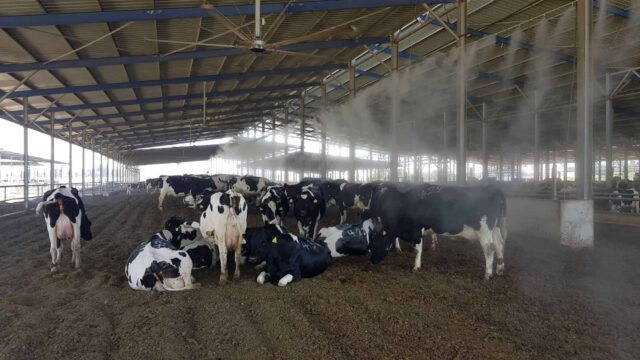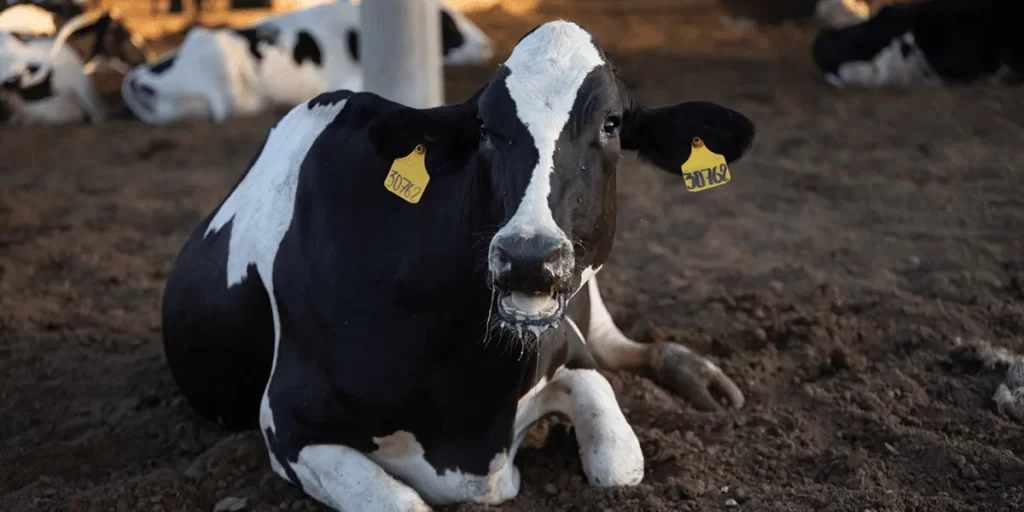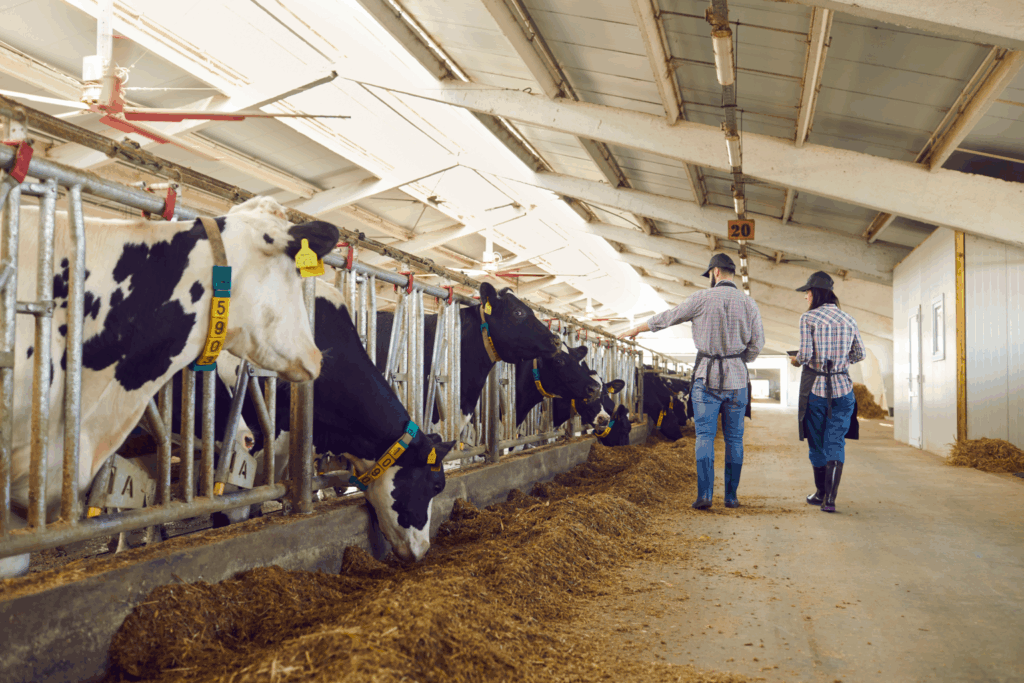
Shade & Housing Innovations for Cooling Cattle
Introduction
Heat stress is a major challenge for dairy farmers, particularly in regions experiencing rising temperatures due to climate change. Excessive heat affects milk production, cow health, and overall farm efficiency. Traditional cooling methods such as fans and sprinklers help, but proper shade and housing innovations offer long-term, sustainable solutions for reducing heat stress in dairy cattle. This article explores sustainable and energy-efficient cooling barns, the importance of proper shading, and strategies for optimizing airflow in dairy sheds.
The Impact of Heat Stress on Dairy Cattle

Cows are highly sensitive to heat, and prolonged exposure can lead to:
- Reduced feed intake, leading to lower milk production.
- Increased body temperature and respiration rate.
- Lower fertility rates and compromised reproduction.
- Increased susceptibility to diseases such as mastitis.
- Reduced overall farm profitability.
To mitigate these issues, innovative shade structures and housing designs are essential in keeping cattle cool and improving productivity.
Sustainable and Energy-Efficient Cooling Barns
Modern cooling barns are designed to provide optimal ventilation, thermal insulation, and strategic cooling mechanisms. These barns utilize natural airflow, energy-efficient materials, and innovative cooling systems to ensure cattle remain comfortable in high temperatures.
1. Design Features of Cooling Barns
A well-designed cooling barn should incorporate:
- High Roofs and Open Eaves: Allows for better air circulation and heat dissipation.
- Reflective Roofing Materials: Reduces heat absorption, keeping the barn cooler.
- Insulated Walls and Ceilings: Prevents heat build-up inside the barn.
- Optimized Barn Orientation: Positioning barns east-west minimizes direct sun exposure.
- Natural Ventilation Systems: Encourages continuous airflow to remove hot air and maintain cooler conditions.
2. Energy-Efficient Cooling Technologies
Energy-efficient systems help regulate barn temperature without excessive electricity consumption. These include:
- Solar-Powered Fans: Utilize renewable energy to improve airflow and cooling.
- Geothermal Cooling Systems: Use underground temperatures to regulate barn conditions.
- Automated Ventilation Controls: AI-driven ventilation systems adjust airflow based on real-time temperature data.
The Importance of Proper Shading

Providing adequate shade is one of the most cost-effective ways to reduce heat stress in dairy cattle. Shade structures help lower body temperatures, improve cow comfort, and maintain milk production levels.
1. Types of Shade Structures
Farmers can implement various shading solutions, including:
- Natural Shade from Trees: A sustainable option that provides cooling and enhances environmental benefits.
- Permanent Shade Structures: Metal or polycarbonate roofing designed to block sunlight while allowing airflow.
- Portable Shade Shelters: Movable structures that allow flexibility in pasture-based dairy systems.
- Albedo-Enhancing Materials: Reflective shade materials that reduce heat absorption.
2. Strategic Placement of Shade
- Shade should be placed in high-traffic areas such as feeding zones and resting areas.
- Overcrowding under shade can be an issue—distributing multiple shade sources ensures all cattle benefit.
- Providing adequate space per cow (at least 3.5-4.5 m² per animal) prevents competition and heat stress.
Optimizing Airflow in Dairy Sheds
Airflow management is critical in maintaining an ideal barn environment, preventing heat accumulation, and enhancing overall cattle well-being.
1. Ventilation Systems in Dairy Sheds
Effective ventilation ensures constant air exchange, removing heat, moisture, and harmful gases like ammonia. Common ventilation strategies include:
- Cross Ventilation: Openings on both sides of the barn allow for natural airflow.
- Tunnel Ventilation: Fans pull air through the barn, creating a continuous cooling effect.
- Ridge Ventilation: Heat escapes through roof vents, reducing barn temperature.
2. Placement of Fans for Maximum Efficiency
- Fans should be placed at strategic intervals to ensure uniform airflow.
- Angle fans downward towards cows for better cooling efficiency.
- High-volume, low-speed (HVLS) fans reduce heat stress with minimal energy consumption.
Benefits of Shade and Housing Innovations
1. Increased Milk Production
Cows kept in cool, stress-free environments maintain higher feed intake and better milk production levels.
2. Improved Animal Health and Welfare
Properly cooled cattle experience fewer heat-related illnesses, lower respiratory distress, and enhanced overall well-being.
3. Energy and Cost Savings
Sustainable shade and housing solutions reduce reliance on electric cooling methods, cutting down electricity and water costs.
4. Environmental Sustainability
Utilizing solar energy, natural ventilation, and eco-friendly building materials contributes to sustainable dairy farming.
Challenges and Considerations
1. Initial Investment Costs
- Constructing energy-efficient barns and shade structures requires upfront capital.
- However, long-term savings in energy and medical expenses justify the investment.
2. Land and Space Constraints
- Farmers with limited space may need compact yet efficient cooling designs.
- Rotational shade systems can be a viable alternative for smaller farms.
3. Maintenance and Management
- Regular maintenance of shading structures and ventilation systems ensures efficiency.
- Monitoring dust accumulation and airflow obstructions is crucial for proper ventilation.
Future Trends in Dairy Housing Innovations
- Smart Climate-Controlled Barns: AI-driven cooling and ventilation for automated temperature management.
- Eco-Friendly Cooling Materials: Use of green roofs, bamboo shades, and thermal-reflective coatings.
- Modular Housing Units: Easily adaptable housing designs for different climates and farm sizes.
- Integration with IoT Sensors: Real-time tracking of barn temperature and humidity to trigger automated cooling interventions.
Conclusion
Shade and housing innovations play a crucial role in reducing heat stress in dairy cattle, ultimately improving milk production, animal health, and farm profitability. Investing in sustainable cooling barns, efficient shading systems, and optimized airflow management ensures long-term benefits for dairy farmers. As climate change continues to impact agriculture, implementing smart, energy-efficient housing solutions will be key to ensuring sustainable and profitable dairy farming in the future.




















